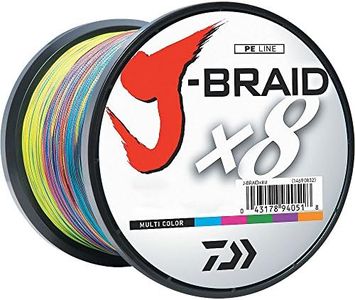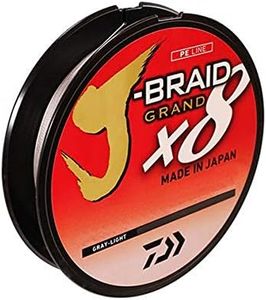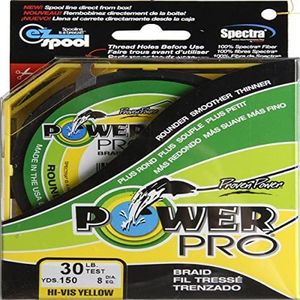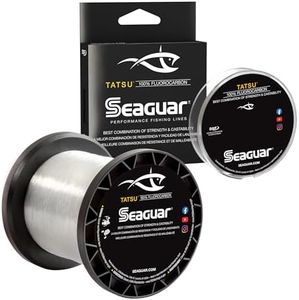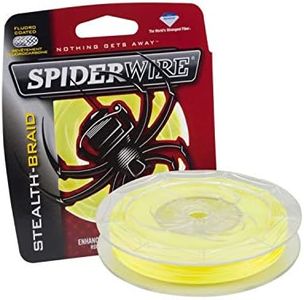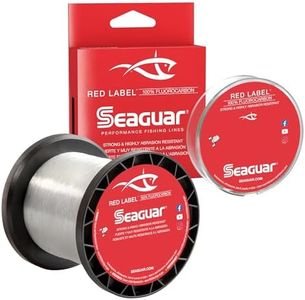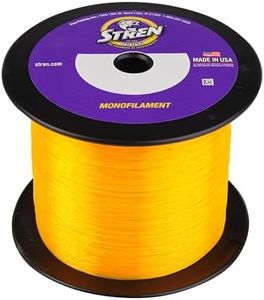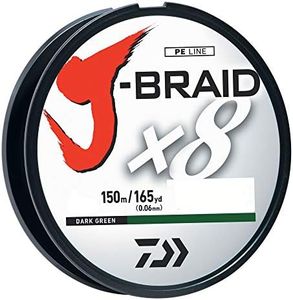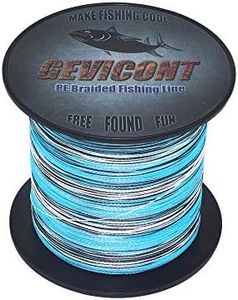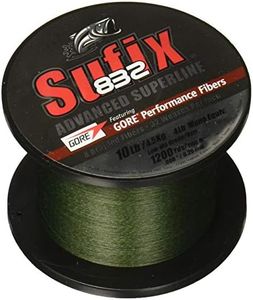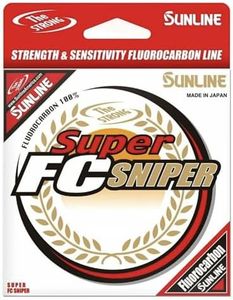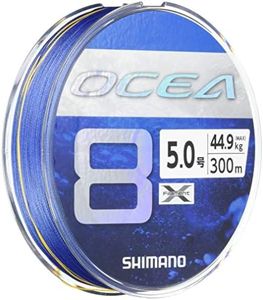We Use CookiesWe use cookies to enhance the security, performance,
functionality and for analytical and promotional activities. By continuing to browse this site you
are agreeing to our privacy policy
10 Best Fishing Line For Trouts
From leading brands and best sellers available on the web.Buying Guide for the Best Fishing Line For Trouts
When choosing a fishing line for trout, it's important to pick one that matches your fishing environment, technique, and the size of trout you expect to catch. The main factors you'll want to think about include the type and strength of the line, how visible it is in the water, and how easily it can be cast. Making the right choice helps you present your lure naturally and increases your chance of success.Line Type (Monofilament, Fluorocarbon, Braided)Fishing lines come in several types: monofilament, fluorocarbon, and braided. Monofilament is stretchy, easy to handle, and often good for beginners; it's popular for general trout fishing. Fluorocarbon is nearly invisible underwater and sinks faster, making it great for wary, clear-water trout. Braided line is very strong for its size and good for tough conditions, but it's more visible in the water. Choose monofilament for easy handling and beginners, fluorocarbon for clear water or shy trout, and braided line if you need extra strength or are fishing around obstacles.
Pound Test (Strength)The pound test tells you how much weight the line can handle before breaking. Lighter lines (2-6 lbs) are usually best for trout, as they are less visible and allow for better lure action, but they are also more likely to break on bigger fish or in snaggy areas. Heavier lines (8 lbs and up) give more strength and are better for larger trout, strong current, or fishing near rocks and heavy cover. For most trout fishing, choosing a line between 4 and 6 pounds gives you a good balance of stealth and reliability; go lighter for small streams or pressured fish, heavier for big trout or rough conditions.
Line Visibility (Color and Material)Trout can be cautious and are known to notice fishing lines. Clear or low-visibility lines are better for clear water, while high-visibility lines can help you see when a fish bites but may spook sensitive trout. Fluorocarbon is naturally less visible underwater, while colored monofilament and braided lines are more noticeable. Pick a line that is hard for trout to see if you fish in clear water or your trout are easily spooked; use highly visible options only if spotting the line yourself is crucial and the fish aren’t picky.
Line DiameterThe thickness of your line affects how it moves through water and how easily trout can see it. Thinner lines are less visible and perform better for delicate presentations but are less durable against snags or big fish. Thicker lines are tougher, but they can scare off wary trout and reduce casting distance. For most trout fishing, a thinner line (as matched to your pound test) is ideal, unless you need extra strength for challenging conditions.
Stretch and SensitivitySome lines stretch more than others, which can absorb the sudden movements of a trout and help keep the fish hooked. Monofilament stretches the most, which can forgive mistakes but may reduce your ability to feel subtle bites. Braided has hardly any stretch, offering more sensitivity for light bites but requires careful handling. Decide if you want more forgiveness with stretch (good for beginners and general fishing) or higher sensitivity (helpful for detecting soft bites or using certain techniques).

